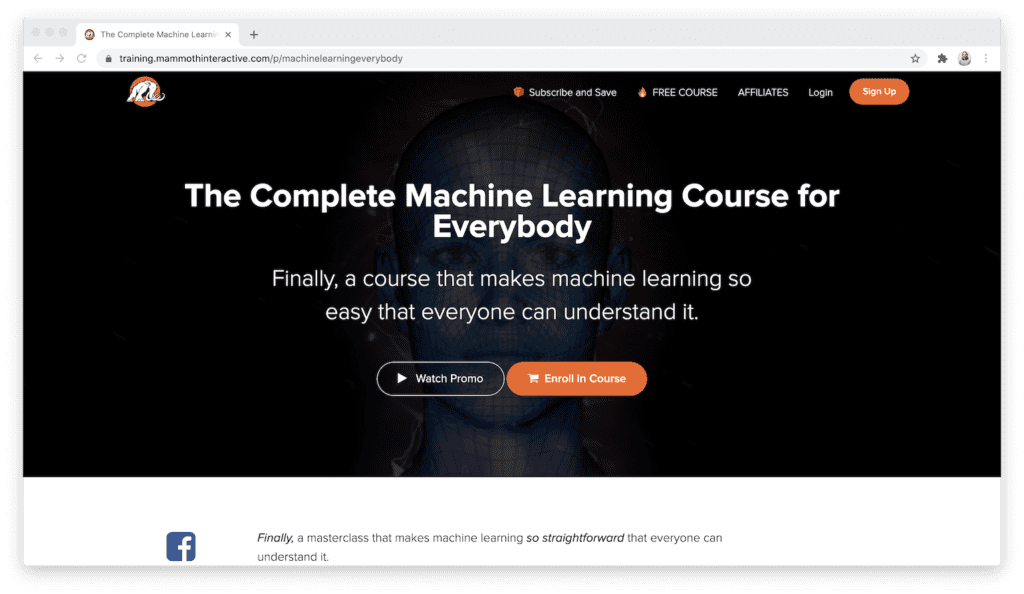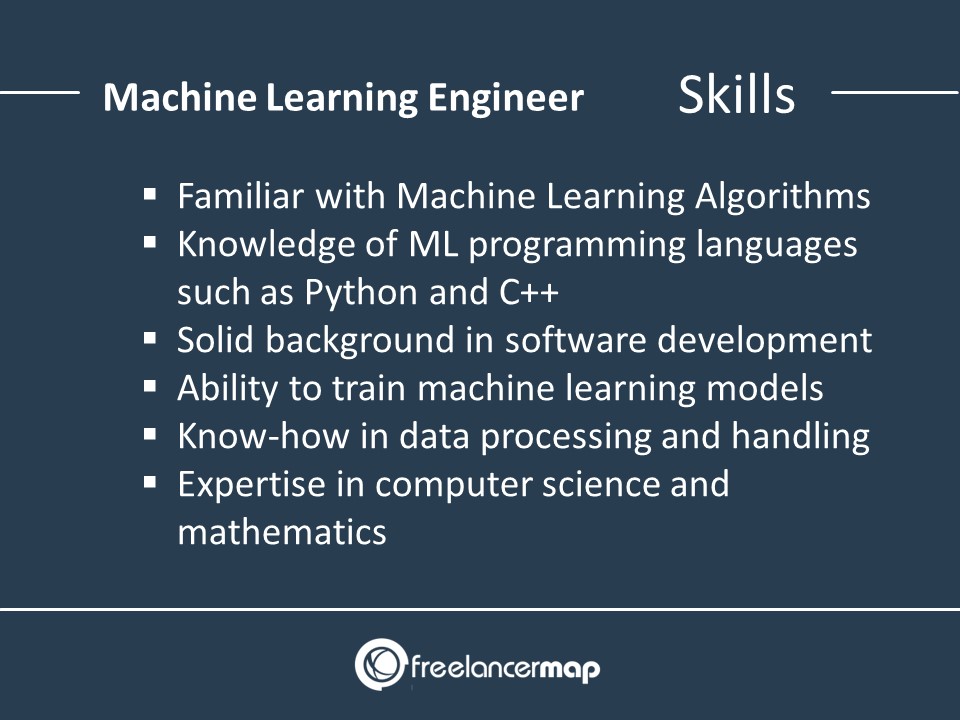All Categories
Featured
Table of Contents
- – Fascination About What Is A Machine Learning E...
- – The 5-Minute Rule for Machine Learning Devops ...
- – Getting The Aws Machine Learning Engineer Nan...
- – Best Machine Learning Courses & Certificates ...
- – The smart Trick of Machine Learning Engineer...
- – Machine Learning In Production / Ai Engineer...
- – All about How To Become A Machine Learning E...
Some individuals believe that that's cheating. Well, that's my whole career. If somebody else did it, I'm going to use what that person did. The lesson is putting that apart. I'm requiring myself to analyze the possible services. It's more concerning taking in the content and trying to apply those ideas and less concerning finding a library that does the job or searching for somebody else that coded it.
Dig a little bit deeper in the mathematics at the beginning, just so I can develop that foundation. Santiago: Ultimately, lesson number 7. I do not believe that you have to understand the nuts and screws of every formula prior to you use it.
I would have to go and inspect back to actually get a much better intuition. That doesn't mean that I can not fix things using neural networks? It goes back to our arranging example I assume that's simply bullshit recommendations.
As a designer, I've worked on numerous, many systems and I've utilized numerous, many things that I do not understand the nuts and bolts of just how it functions, also though I comprehend the impact that they have. That's the last lesson on that string. Alexey: The funny thing is when I think of all these collections like Scikit-Learn the formulas they make use of inside to execute, as an example, logistic regression or something else, are not the like the algorithms we examine in artificial intelligence classes.
Fascination About What Is A Machine Learning Engineer (Ml Engineer)?
So also if we tried to find out to obtain all these fundamentals of maker understanding, at the end, the algorithms that these collections make use of are various. ? (30:22) Santiago: Yeah, absolutely. I believe we need a great deal more materialism in the industry. Make a lot even more of an effect. Or focusing on supplying worth and a little bit much less of purism.

Incidentally, there are 2 various courses. I generally speak to those that intend to operate in the sector that intend to have their impact there. There is a course for scientists and that is entirely different. I do not risk to discuss that because I don't understand.
Right there outside, in the industry, pragmatism goes a long way for sure. Santiago: There you go, yeah. Alexey: It is a good inspirational speech.
The 5-Minute Rule for Machine Learning Devops Engineer
One of things I wished to ask you. I am taking a note to speak about progressing at coding. Yet initially, allow's cover a number of points. (32:50) Alexey: Allow's begin with core devices and frameworks that you require to discover to in fact transition. Let's state I am a software program designer.
I know Java. I know SQL. I understand exactly how to utilize Git. I understand Bash. Possibly I know Docker. All these things. And I find out about artificial intelligence, it appears like an awesome thing. What are the core tools and frameworks? Yes, I watched this video and I get encouraged that I do not need to obtain deep right into mathematics.
What are the core tools and structures that I require to learn to do this? (33:10) Santiago: Yeah, absolutely. Great question. I think, leading, you need to start finding out a little of Python. Because you already know Java, I do not assume it's going to be a significant change for you.
Not because Python is the very same as Java, however in a week, you're gon na get a whole lot of the differences there. Santiago: After that you get certain core devices that are going to be made use of throughout your entire career.
Getting The Aws Machine Learning Engineer Nanodegree To Work
That's a library on Pandas for data control. And Matplotlib and Seaborn and Plotly. Those three, or among those three, for charting and showing graphics. After that you obtain SciKit Learn for the collection of artificial intelligence formulas. Those are devices that you're mosting likely to have to be utilizing. I do not recommend just going and discovering about them unexpectedly.
Take one of those programs that are going to begin introducing you to some troubles and to some core ideas of machine discovering. I do not keep in mind the name, but if you go to Kaggle, they have tutorials there for free.
What's good concerning it is that the only need for you is to know Python. They're going to provide an issue and tell you exactly how to utilize choice trees to resolve that particular issue. I think that process is exceptionally effective, since you go from no device finding out history, to understanding what the trouble is and why you can not address it with what you recognize today, which is straight software engineering methods.
Best Machine Learning Courses & Certificates [2025] Can Be Fun For Anyone
On the other hand, ML designers concentrate on structure and deploying maker knowing models. They concentrate on training models with information to make forecasts or automate tasks. While there is overlap, AI designers handle even more varied AI applications, while ML engineers have a narrower concentrate on artificial intelligence formulas and their practical application.

Maker knowing designers focus on developing and releasing machine knowing versions into production systems. They function on design, guaranteeing models are scalable, reliable, and integrated into applications. On the other hand, data researchers have a more comprehensive duty that includes information collection, cleaning, expedition, and building models. They are usually responsible for drawing out insights and making data-driven choices.
As companies significantly embrace AI and artificial intelligence technologies, the need for skilled professionals grows. Artificial intelligence engineers deal with cutting-edge projects, add to technology, and have competitive salaries. Success in this field calls for continual discovering and keeping up with developing technologies and methods. Device discovering duties are generally well-paid, with the capacity for high making potential.
ML is essentially different from conventional software development as it concentrates on mentor computer systems to pick up from information, instead of programs explicit rules that are executed methodically. Unpredictability of outcomes: You are possibly used to writing code with predictable results, whether your function runs once or a thousand times. In ML, nevertheless, the results are less particular.

Pre-training and fine-tuning: How these models are educated on substantial datasets and afterwards fine-tuned for certain jobs. Applications of LLMs: Such as text generation, belief analysis and details search and access. Papers like "Focus is All You Need" by Vaswani et al., which introduced transformers. On the internet tutorials and training courses concentrating on NLP and transformers, such as the Hugging Face training course on transformers.
The smart Trick of Machine Learning Engineer: A Highly Demanded Career ... That Nobody is Discussing
The capacity to take care of codebases, combine adjustments, and resolve conflicts is simply as essential in ML growth as it is in standard software application jobs. The skills created in debugging and testing software applications are very transferable. While the context may change from debugging application logic to recognizing concerns in data processing or design training the underlying principles of methodical examination, hypothesis screening, and repetitive improvement coincide.
Maker understanding, at its core, is heavily reliant on statistics and likelihood theory. These are crucial for recognizing just how algorithms learn from data, make forecasts, and assess their efficiency.
For those interested in LLMs, a comprehensive understanding of deep discovering styles is valuable. This consists of not only the technicians of semantic networks but additionally the style of details models for different usage situations, like CNNs (Convolutional Neural Networks) for photo handling and RNNs (Reoccurring Neural Networks) and transformers for sequential data and all-natural language processing.
You should understand these problems and discover methods for recognizing, minimizing, and connecting regarding bias in ML designs. This consists of the possible influence of automated choices and the honest effects. Lots of models, especially LLMs, require considerable computational resources that are usually given by cloud systems like AWS, Google Cloud, and Azure.
Structure these skills will certainly not only promote an effective change into ML but likewise make certain that designers can add effectively and responsibly to the advancement of this dynamic area. Concept is essential, but nothing beats hands-on experience. Begin working on projects that enable you to use what you've learned in a practical context.
Build your jobs: Beginning with simple applications, such as a chatbot or a text summarization device, and slowly boost intricacy. The area of ML and LLMs is quickly developing, with new innovations and modern technologies emerging regularly.
Machine Learning In Production / Ai Engineering Fundamentals Explained
Contribute to open-source projects or create blog articles about your understanding journey and tasks. As you obtain know-how, begin looking for chances to include ML and LLMs right into your job, or look for brand-new functions concentrated on these technologies.

Vectors, matrices, and their function in ML formulas. Terms like design, dataset, attributes, tags, training, reasoning, and validation. Data collection, preprocessing techniques, design training, examination processes, and release factors to consider.
Decision Trees and Random Woodlands: Intuitive and interpretable versions. Support Vector Machines: Maximum margin category. Matching issue types with appropriate designs. Stabilizing efficiency and complexity. Standard framework of semantic networks: neurons, layers, activation features. Split calculation and forward propagation. Feedforward Networks, Convolutional Neural Networks (CNNs), Persistent Neural Networks (RNNs). Photo acknowledgment, sequence forecast, and time-series analysis.
Data circulation, transformation, and function design approaches. Scalability principles and efficiency optimization. API-driven techniques and microservices combination. Latency monitoring, scalability, and version control. Constant Integration/Continuous Release (CI/CD) for ML workflows. Model monitoring, versioning, and efficiency tracking. Detecting and attending to modifications in model performance over time. Attending to efficiency bottlenecks and source monitoring.
All about How To Become A Machine Learning Engineer
Training course OverviewMachine learning is the future for the future generation of software application experts. This training course acts as a guide to maker discovering for software engineers. You'll be presented to 3 of one of the most pertinent parts of the AI/ML discipline; managed understanding, semantic networks, and deep learning. You'll comprehend the differences in between standard programs and maker learning by hands-on growth in monitored learning before constructing out complicated dispersed applications with neural networks.
This program functions as a guide to equipment lear ... Show Much more.
Table of Contents
- – Fascination About What Is A Machine Learning E...
- – The 5-Minute Rule for Machine Learning Devops ...
- – Getting The Aws Machine Learning Engineer Nan...
- – Best Machine Learning Courses & Certificates ...
- – The smart Trick of Machine Learning Engineer...
- – Machine Learning In Production / Ai Engineer...
- – All about How To Become A Machine Learning E...
Latest Posts
A Non-overwhelming List Of Resources To Use For Software Engineering Interview Prep
Best Free & Paid Coding Interview Prep Resources
Is Leetcode Enough For Faang Interviews? What You Need To Know
More
Latest Posts
A Non-overwhelming List Of Resources To Use For Software Engineering Interview Prep
Best Free & Paid Coding Interview Prep Resources
Is Leetcode Enough For Faang Interviews? What You Need To Know